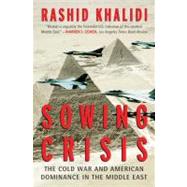
Note: Supplemental materials are not guaranteed with Rental or Used book purchases.
Purchase Benefits
What is included with this book?
| Preface | p. xi |
| Introduction: Rethinking the Cold War in the Middle East | p. 1 |
| Oil and the Origins of the Cold War | p. 40 |
| The Middle East and the International System | p. 70 |
| Superpower Rivalry as a Catalyst for Conflict | p. 101 |
| The Cold War and the Undermining of Democracy | p. 159 |
| Victory in the Cold War, and the Global War on Terror | p. 201 |
| Acknowledgments | p. 247 |
| Notes | p. 252 |
| Index | p. 292 |
| Table of Contents provided by Ingram. All Rights Reserved. |
The New copy of this book will include any supplemental materials advertised. Please check the title of the book to determine if it should include any access cards, study guides, lab manuals, CDs, etc.
The Used, Rental and eBook copies of this book are not guaranteed to include any supplemental materials. Typically, only the book itself is included. This is true even if the title states it includes any access cards, study guides, lab manuals, CDs, etc.
Excerpted from Sowing Crisis: The Cold War and American Dominance in the Middle East by Rashid Khalidi
All rights reserved by the original copyright owners. Excerpts are provided for display purposes only and may not be reproduced, reprinted or distributed without the written permission of the publisher.